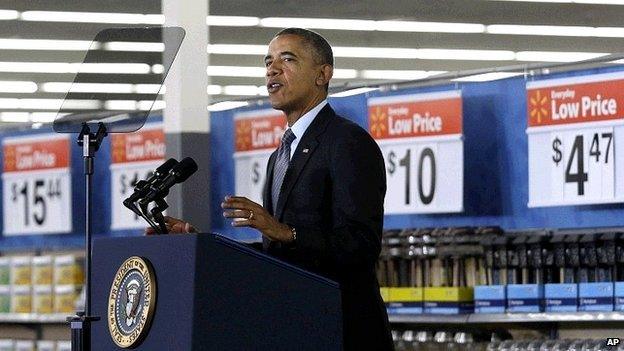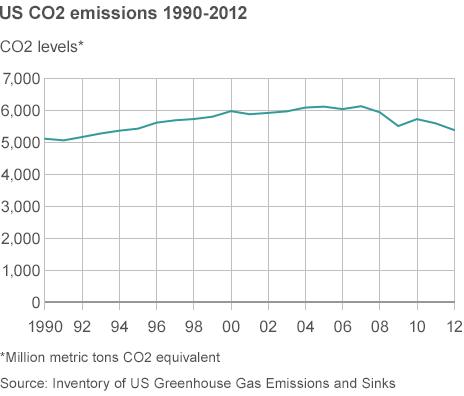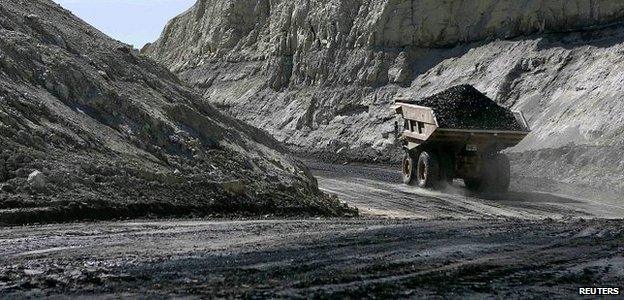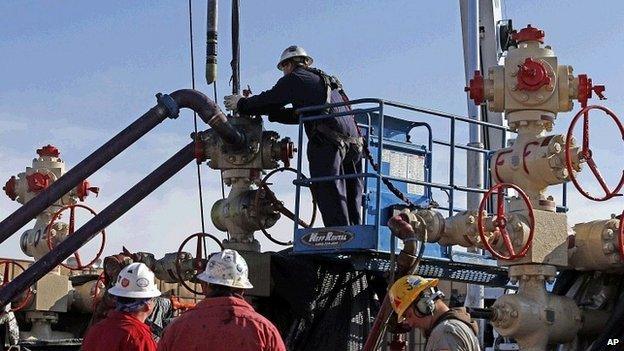US set 'to take very significant step' on climate
- Published
- comments

Opponents of the new rules argue that they will drive up electricity prices
President Obama is set to unveil the most significant American attempt yet made to curb carbon dioxide emissions when he announces new restrictions on existing power plants on Monday.
The president is likely to endorse a set of rules drawn up by the Environmental Protection Agency (EPA) that will seek to limit emissions from 1,600 existing facilities that are responsible for about a third of US CO2 emissions.
The EPA is likely to issue a sector-wide target for power generation, but it will be up to each individual state to draw up a plan for the required cut in emissions.
The White House is likely to allow the states a wide latitude in how they achieve these cuts.

Natural gas, nuclear power and energy efficiency could all be used to meet the targets - the EPA is also likely to endorse carbon cap and trade schemes.
"It is very significant for the US, this is the most powerful tool the administration has to reduce greenhouse gases," says Dr Tim Profeta, from Duke University.
"I think you will see the president try and push for a more aggressive target - there are plenty of rumours of 20-25% reductions from the sector."
The new regulations are seen as critical to fulfilling the president's pledge, made at the doomed Copenhagen climate summit in 2009, to cut overall US carbon levels by 17% by 2020.

Coal still accounts for 40% of electricity in the United States
As Congress is highly divided on the issue, the president has used the EPA to try and regulate carbon.
The US Supreme Court ruled in 2007 that the EPA had the authority to limit CO2 emissions under the Clean Air Act.
Despite that ruling, Dr Profeta believes the new regulations will face strong legal challenges from opponents who say that rules will drive up electricity prices and cut employment as coal plants in particular shut down across the US:
"The president is secure in that he has the authority but there will certainly be litigation over whether he can exercise this authority in the way he does.
"The provision the EPA are using is very infrequently used, so there is not much track record on how you use it. The devil is in the detail with this."
The use of shale gas, fracked from huge reserves in Pennsylvania, Texas and elsewhere has already helped the US to curb its carbon. But coal is still a major factor in energy production, accounting for about 40% of electricity.
Prof Louis Derry from Cornell University says that the new proposals will speed up the demise of coal or force generators to fit expensive carbon capture and storage technology:
"Retiring old, dirty, coal-fired generating plants will continue the US trend of reduced CO2 emissions, and be the largest single step we have taken on emissions reduction. It will also reduce demand for coal mining, a practice that is destructive to the local environment and dangerous for workers."

The use of shale gas has already helped the US curb its carbon emissions
After the proposals are announced, there will be a year-long consultation, followed by another 12 months in which states will have to submit their plans for review.
Despite these delays, international observers believe the new proposals will help re-establish the credibility of the US on the international stage.
"Some cynics would say it is just the US catching up," says Liz Gallagher, from E3G, a sustainable development think tank.
"I think it gives a sense of empowerment to those heads of states who want to do more on climate change and this gives them a boost and says the US is on board - it's quite a positive signal to send."
Follow Matt on Twitter, external.